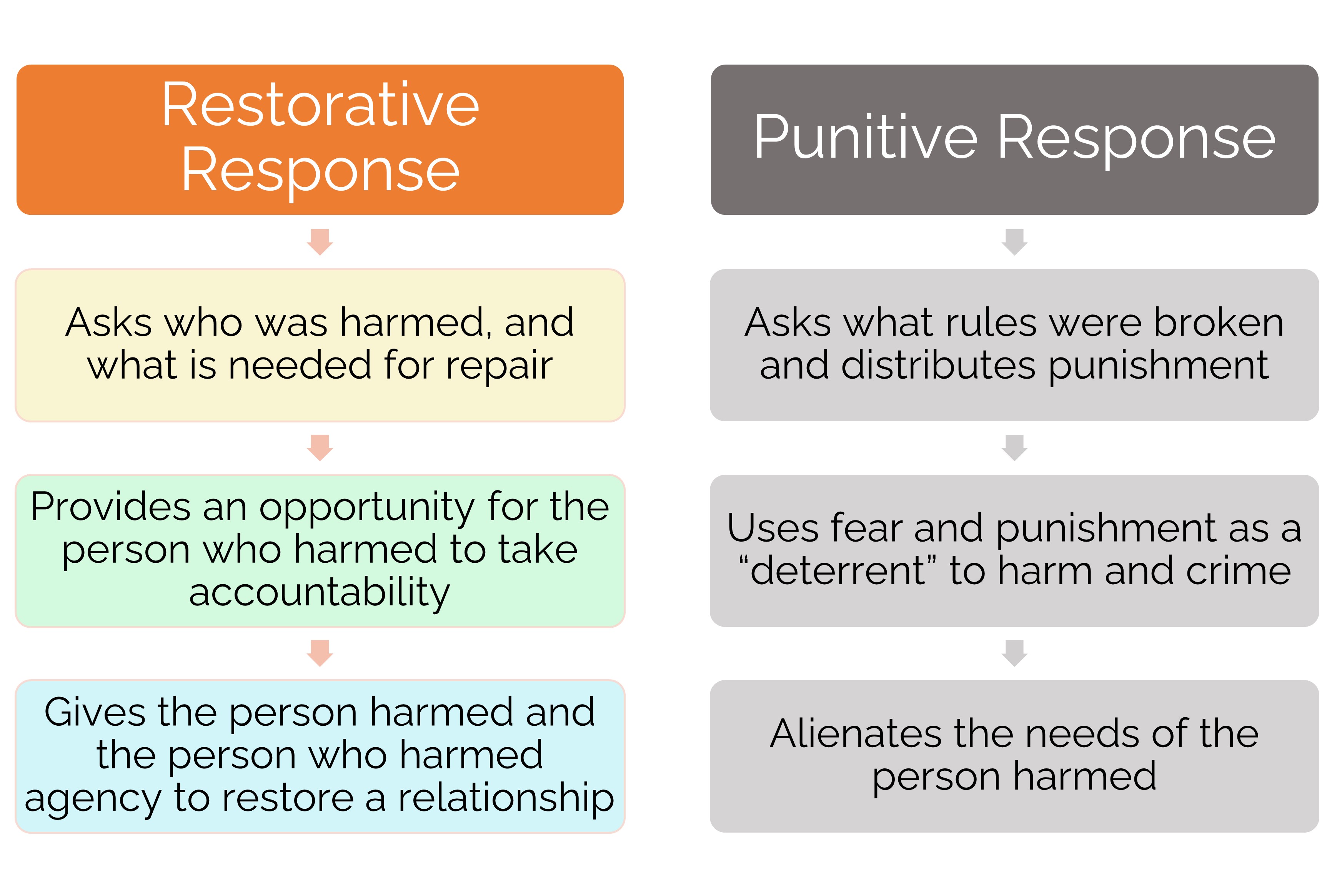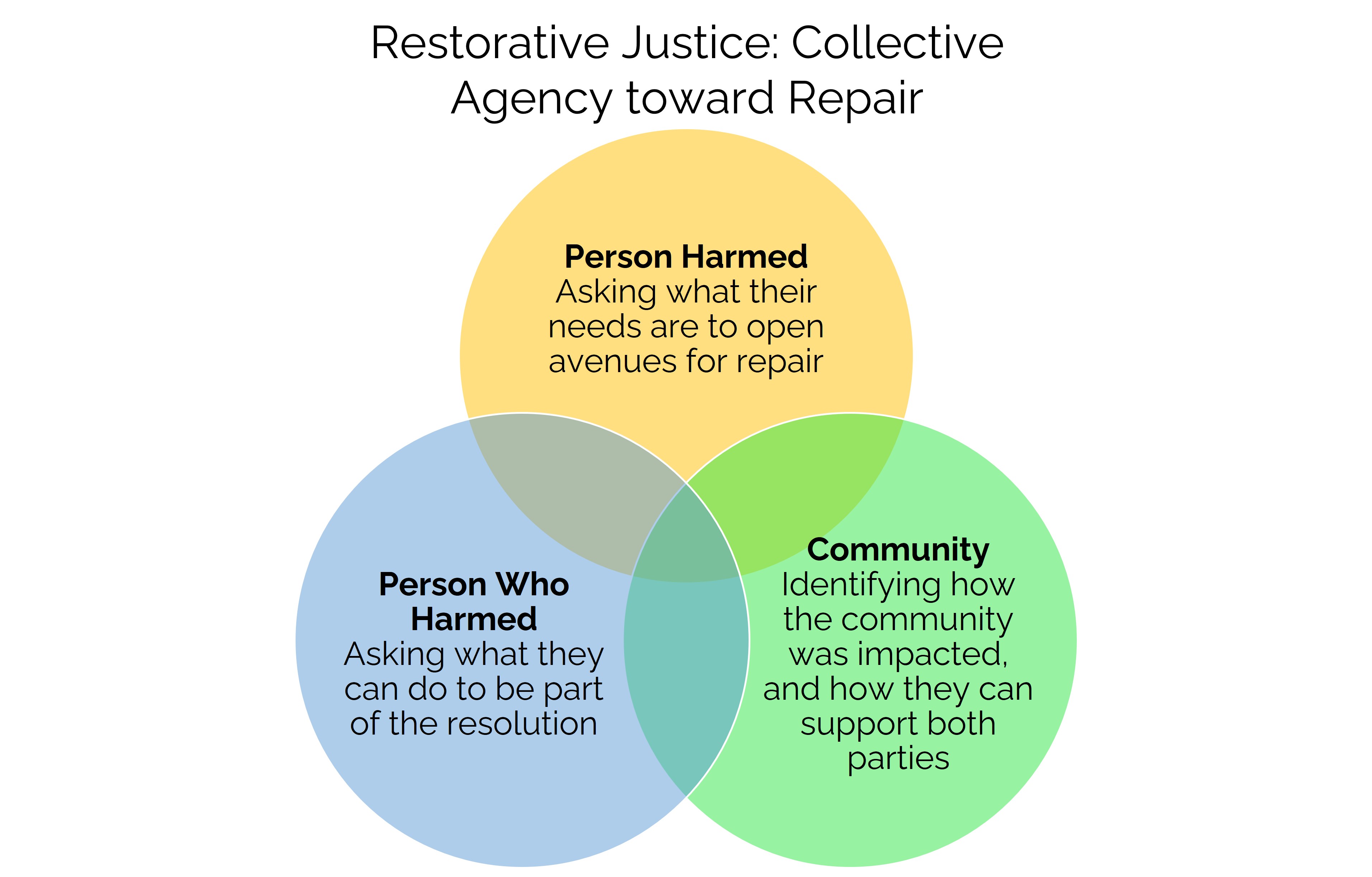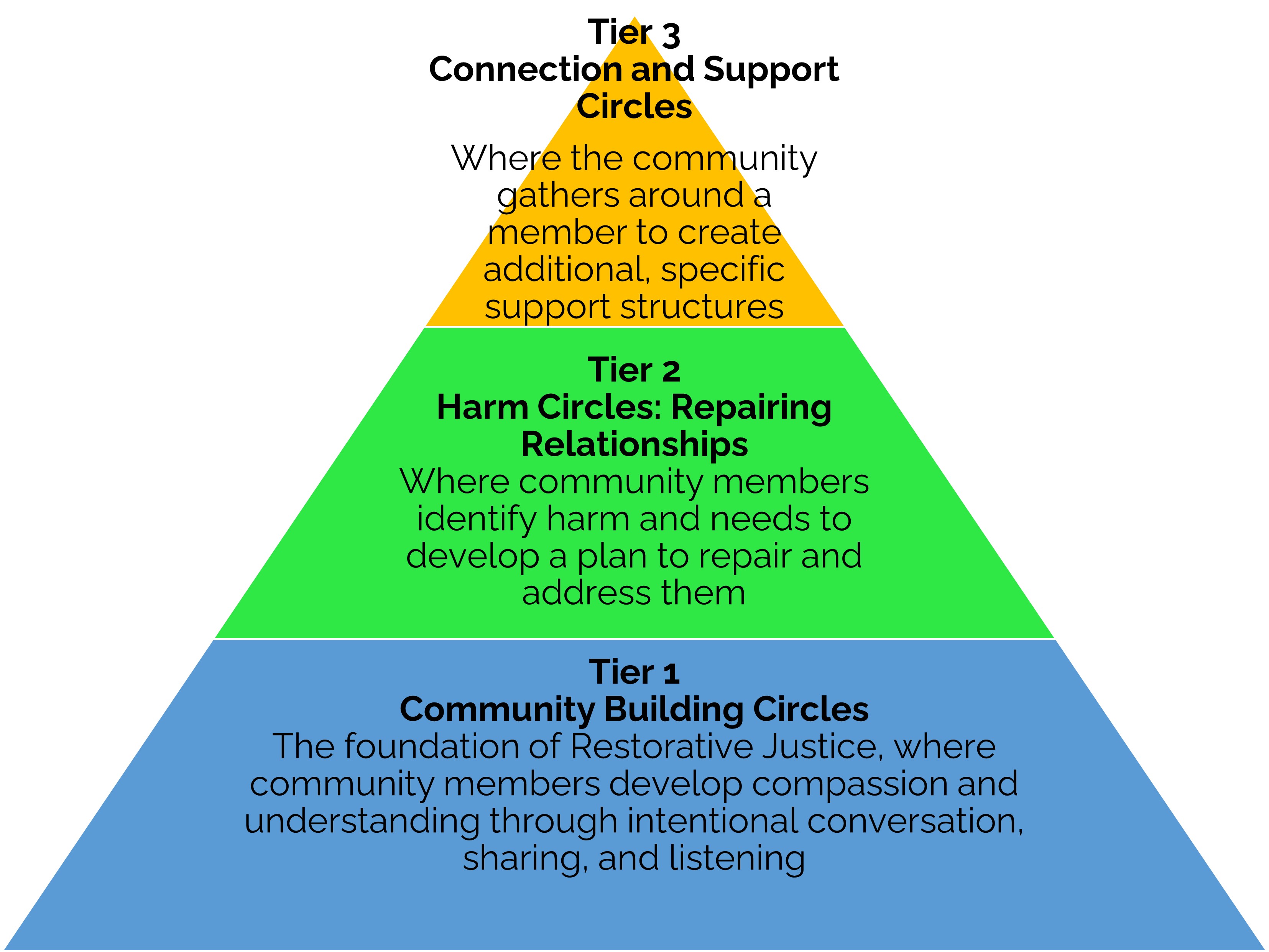Restorative Practices At Reed
Community building and Restorative responses to Harm
Roots and Principles
Indigenous Origins
Restorative Practices are a form of justice that seeks to repair harm by addressing its impacts on individuals and their community. This approach is informed by global indigenous practices, such as those of the Maori in New Zealand, the Hollow Water First Nation in Canada, and the Kake Village in Alaska. The Restorative Practices Team hopes to respond to conflict and harm by incorporating collective decision-making, giving community members agency and a voice to address the root causes and impacts of harm. While we do not engage in indigenous practices, Restorative Practices, Traditional Justice, and Peacemaking practices that precede our approach to justice inform our approach to resolving conflict and repairing relationships, and we hope to mindfully acknowledge the lands and peoples who have suffered through genocide, displacement, and assimilation as a result of of Western colonialism. In an effort to promote information and education about the roots of Restorative Practices, we've created a page with links and resources associated with historical and modern iterations of Restorative, Traditional, or Community Justice.
What are Restorative Practices?
Restorative Practices work through various types of circles, which are events and spaces that invite equality, openness, and collaboration among its participants by providing a structured approach to conversation, giving everyone an opportunity to participate. All circles are completely voluntary, and participants engage as much as they feel comfortable with. To promote the flow of discussion, we use a single talking piece as a physical object to represent an individual’s opportunity to share and the rest of the group’s opportunity to listen and learn.
We at Reed hope to promote Restorative Practices thoughtfully and provide community members with an alternative to structural punishment, giving the opportunity to address the impacts of harm on individuals and encourage personal accountability. Restorative modalities like Community Building circles, Harm circles, and Connection and Support circles are all processes that the Reed Restorative Practices Team uses to reinforce a community-based approach to interpersonal interactions. Instead of relying on centralized authorities to distribute punishment, we believe that true accountability requires the active involvement of all people involved when a person causes harm.
Who is the Restorative Practices Team?
The Reed Restorative Practices Team is a student-led group, composed of 3-5 trained facilitators, that works with student, staff, and faculty groups and individuals to build community and address harm. Of those facilitators, we have 2 co-chairs who handle most of the logistical work and the RPT email, restorativepractices@reed.edu. Our current adviser is the Assistant Dean of Student Rights and Responsibilities, Cameron Tanner.
What Restorative Practices look like at Reed
While Restorative Practices across institutions and peoples remains centered in similar core principles, its manifestations can differ depending on its integration in the community and the training given to facilitators. At Reed, currently, we are trained to facilitate Community Building circles, Harm circles, and Connection and Support circles.
These follow the 3 tier framework for Restorative Justice, which places community building as the foundation of all interaction, uses harm circles as an avenue to repair relationships, and Connection and Support circles as methods to provide members additional support when re-entering a community.
Community Building Circles:
Community building circles do pretty much as advertised--they help build community. We place these as the foundation of all Restorative Practices because, ideally, having a strong sense of community invites resilience when harm occurs. Community building circles can be centered around a community, topic, event, or any other concept that involves the joint resilience of community members.
These circles help communities of all sizes to establish structure through creating community agreements and establishing community values, build relations through guided and intentional discussion, and altogether reinforce the sense of mutual consequence embedded in community. While all community circles follow a general structure, they are all unique. If you have any questions about community building circles, feel free to send an email to restorativepractices@reed.edu, or visit the Community Building Circle page.
Harm Circles:
Also called peacemaking circles, these circles respond to harm by identifying the impacts of harm and the needs of the person or people harmed. Part of the second tier of Restorative Practices, the restorative process around harm is generally more complex than a circle, and requires more time and involvement, and the desire to hold oneself accountable for causing harm.
Facilitators take a multi-partial approach that acknowledges the direction of harm, identifying a person harmed and a person who harmed, while also acknowledging the experiences and perspectives of all people involved. Harm circles, which are a part of the restorative response to harm, engage with all individuals affected and involved in a crime or instance of harm to find out what is needed for repair, rather than utilizing punishments to respond to harm.
 When someone causes harm to another, the person harmed or the person who harmed, or a second or third party can reach out to the RPT to begin the procedure for tier 2 harm circles. Typically, they will begin an inquiry through either an email or by filling out our google form to outline the situation and give the RPT fundamental information regarding the event.
When someone causes harm to another, the person harmed or the person who harmed, or a second or third party can reach out to the RPT to begin the procedure for tier 2 harm circles. Typically, they will begin an inquiry through either an email or by filling out our google form to outline the situation and give the RPT fundamental information regarding the event.
The process for harm circles requires all parties to be willing to participate. In the first part of the process, a facilitator will meet individually with each person involved in or affected by an instance of harm, giving them a space to talk about their experience and perspective. Each party is encouraged to bring a person to support them throughout the process.
After one or multiple individual sessions, if the facilitator and all participants decide to move forward with the process, the facilitator will set up a time and space to hold a harm circle, or a Restorative conversation, in which participants acknowledge the needs of the person harmed and the person who harmed can take responsibility for their actions' impact on others.
Rather than sanctioning or punishing individuals for their actions, the restorative process engages with the person harmed and person who harmed to give each an active role in the resolution process, a co-created accountability agreement in which the facilitators and circle participants work together to actively repair the relationship. The accountability agreement outlines the steps needed for the person harmed to have their needs met in context of the harm they experienced. After creating an agreement, the facilitator will follow up within several weeks to check in on the progress of the accountability process.
Restorative responses to harm seek to repair individual relationships and address community-level impacts. Harm circles are formatted in a way to provide space for all affected individuals to participate. While not all harm circles must involve more than the participants directly involved in an instance of harm, they give the opportunity for other community members to share their experiences and needs. For more information, please visit out page on the restorative Harm Process, or send us an email.
Connection and Support Circles:
Connection and Support circles, which are part of the third and final tier of Restroative Practices, are another form of circle intended to open a space for the community to support an individual, or core member. While they can be aimed at helping the re-entry of an individual into a community, the community can also demonstrate its support of a struggling individual, welcome new individuals, or otherwise intentionally acknowledge the gaps that form between individuals and their communities. Tier three circles can help people returning from leaves of absence, those previously incarcerated, people struggling with school, work, or other, and needing additional assistance, among others. This practice aims to clarify and reinforce the avenues and support structures available to the core member as their community reaches out to them.
Connection and Support circles can involve a variety of community members that volunteer to demonstrate their active support of the core member. Following a circle structure, the community gathers around the individual to vocalize their role in supporting the core member, and the core member has the opportunity to vocalize their needs. Through this, the circle participants formulate an action plan in which the community delineates how they can help the core member, and the core member takes accountability for using the resources they are offered. Connection and Support circle groups meet regularly until no longer necessary, making the action plan an adaptable framework to promote resiliency. If you're interested to learn more, please visit our page on Connection and Support Circles.
Why Three Tiers?
Restorative Practices are a process requiring ongoing commitment and work. Working across three tiers demonstrates the different levels of integration and support that the RPT provides on campus. While, ideally, we would have all tiers concurrently supporting all those that need it, sometimes this isn’t the case. We, however, uphold that community is at the center of all interactions, both positive and harmful, meaning that a strong community helps build resilience when a person harms another. For this reason, the Restorative Practices Team will always promote building community as an avenue toward repairing harm. While this sometimes lengthens the harm repair process, we view this as essential to truly repairing harm rather than supplying punishments that diminish the opportunity to rebuild relationships and address the actual needs of the person harmed, the person who harmed, and the community of people affected. Restorative Circles are entirely voluntary, which is why they require the dedication of the people involved to truly restore the relationship in order to be most effective. Half the battle is accepting to engage in the process, but the work continues after. While Restorative Justice facilitators are there to provide support to all people involved, we believe in doing with, not doing for. Ultimately, the Restorative Justice process is up to individual accountability and work, thus making it a different experience for everyone.

Our goal for Restorative Practices at Reed is to provide meaningful ways to engage in community at all levels of interaction. Whether to build, repair, or reinforce community, the RPT hopes to be a resource to all members of the Reed community, and are always open to questions, comments, or concerns.
